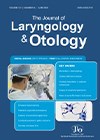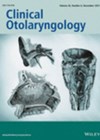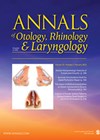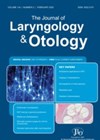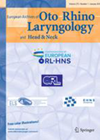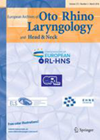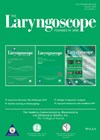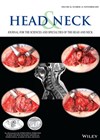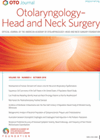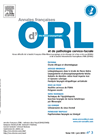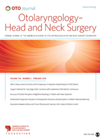
Journal Reviews
Infection and other factors influencing post-tonsillectomy haemorrhage
In this detailed narrative review article, the authors have addressed several factors which could be related to postoperative bleeding after tonsillectomy. As regards to microbiology, the significance of micro-organisms present both on surface and within the tonsils is emphasised and...
Adenotonsillectomy day-case discharge criteria: a systematic review
In this paper, Gowda et al review the literature aiming to answer a long-standing question regarding the criteria for same-day discharge of paediatric patients post adenoidectomy and/or tonsillectomy performed for treatment of obstructive sleep apnoea (OSA). Following PRISMA consensus, they...
Are quinsies worth draining?
Recent data is providing accumulating evidence that treatment failure in the management of peritonsillar abscesses (PTAs, aka ‘quinsies’) is similar when these are managed with medical treatment (MT) alone versus MT plus surgical drainage (M+ST). However, in the absence of...
Is there evidence to support early discharge of patients with tonsillitis, quinsy and epistaxis?
The COVID-19 pandemic, with its unprecedented pressures on the NHS, demands changes in the management of common ENT emergencies. In this review article, information has been gleaned from 22 relevant articles on how this can be done. The Portsmouth tonsillitis...
Traditional incision and drainage of a quinsy may be more efficacious than aspiration
Peritonsillar abscess drainage has always been one of the first procedures an ENT junior doctor performs. Traditionally incision and drainage (I&D) was the mainstay of treatment. In recent years, needle aspiration of the abscess has become much more commonplace, perhaps...
Narrow band imaging in laryngopharyngeal reflux
Narrow band imaging (NBI) is a tool on the Olympus endoscopic systems that uses blue and green wavelengths to enhance visualisation of mucosal vasculature. It has been used to aid in the early diagnosis of upper aerodigestive tract cancers. A...
Do parents sleep better after paediatric adenotonsillectomy?
Paediatric adenotonsillectomy for sleep disordered breathing (SDB) is amongst the commonest surgical procedures performed in ENT. In the outpatient clinic, parents routinely express their concern about their child’s breathing but the impact of sleep disordered breathing on the parent is...
Surviving oropharyngeal squamous cell carcinoma – does subsite matter?
Human papilloma virus (HPV) status is a known prognostic factor in oropharyngeal squamous cell carcinoma (OPSCC). The eighth edition of American Joint Cancer Committee (AJCC) has modified the TNM staging to reflect this. However, subsite as an independent prognostic factor...
Is surgery in obese children with obstructive sleep apnoea effective?
The authors present the results of their literature review and meta-analysis of studies examining adenotonsillectomy, uvulopalatopharyngoplasty (UPPP), supraglottoplasty, tongue base surgery or a combination in obese children with obstructive sleep apnoea (OSA). The one study investigating effects of UPPP was...
Lingual tonsils and obstrucive sleep apnoea syndrome (OSAS)
Obstructive sleep apnoea can be due to narrowing of the retrolingual space by hypertrophic lingual tonsils. The authors studied 11 patients (five males and six females with a mean age of 44.3 years and a mean BMI of 28.6). All...
Is medical therapy without surgical treatment sufficient in treating peritonsillar abscess?
Standard treatment of peritonsillar abscess (PTA) has typically involved both medical therapy and surgical drainage either in the form of needle aspiration, or incision and drainage. However, is medical without surgical treatment sufficient? The authors suggest that medical therapy without...
What is the evidence for contralateral tonsillectomy in TORS for known unilateral tonsil malignancy?
The concept of field changes by carcinogens within the upper aerodigestive tract is well established with reported rates of synchronous tumours of 4% and second primaries of 36%. The tonsil in particular has the highest rate of synchronous tumours, postulated...

